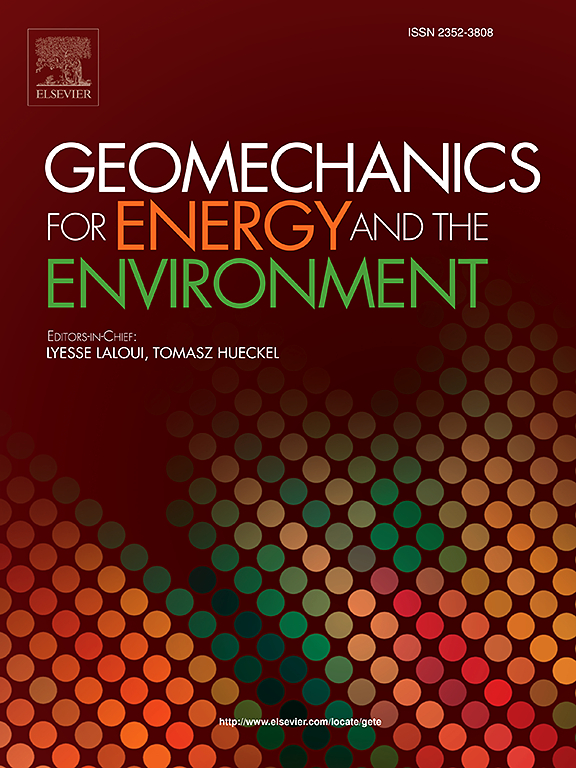可控连续激光岩石加工过程中裂纹演化的研究
IF 3.7
2区 工程技术
Q3 ENERGY & FUELS
引用次数: 0
摘要
基于激光的岩石加工为采矿、钻井、隧道和地热应用提供了一种革命性的方法,解决了传统机械方法的主要局限性,包括工具过度磨损和操作效率低下。尽管前景光明,但诸如各向异性岩石行为、电力传输、地层损害和地下条件不稳定性等挑战需要进一步研究。本研究考察了连续激光岩石加工在石灰岩中诱导可控损伤和裂纹扩展方面的有效性。岩石破坏的不同阶段——从孔隙形成到破碎和分割——被识别出来,揭示了从微观结构改变到宏观压裂的渐进过渡。采用定制的图像分析框架对地下裂纹模式进行高保真的定性和定量评估,为损伤量化提供了强大的工具。这些结果强调了可控连续激光脉冲作为一种可靠的定向岩石崩解方法的潜力,并强调了基于图像的评价在推进激光-岩石相互作用机理理解方面的作用。预计这些发现将对下一代破岩和挖掘技术的发展作出积极贡献。本文章由计算机程序翻译,如有差异,请以英文原文为准。
Investigations into crack evolution during controlled continual laser-based rock processing
Laser-based rock processing presents a transformative approach for mining, drilling, tunnelling, and geothermal applications by addressing key limitations of conventional mechanical methods, including excessive tool wear and operational inefficiencies. Despite its promise, challenges such as anisotropic rock behaviour, power transmission, formation damage, and instability in subsurface conditions require further investigation. This study examines the effectiveness of continual laser-based rock processing in inducing controlled damage and crack propagation in limestone rock. Distinct stages of rock failure – ranging from pore initiation to fragmentation and segmentation – were identified, revealing a progressive transition from microstructural alteration to macroscopic fracturing. A customized image analysis framework was employed to asses subsurface crack patterns, qualitatively and quantitatively with high fidelity, offering a robust tool for damage quantification. The results underscore the potential of controlled continual laser pulsing as a reliable method for targeted rock disintegration and highlight the role of image-based evaluation in advancing the mechanistic understanding of laser-rock interaction. These findings are expected to contribute positively for the development of next-generation rock-breaking and excavation technologies.
求助全文
通过发布文献求助,成功后即可免费获取论文全文。
去求助
来源期刊

Geomechanics for Energy and the Environment
Earth and Planetary Sciences-Geotechnical Engineering and Engineering Geology
CiteScore
5.90
自引率
11.80%
发文量
87
期刊介绍:
The aim of the Journal is to publish research results of the highest quality and of lasting importance on the subject of geomechanics, with the focus on applications to geological energy production and storage, and the interaction of soils and rocks with the natural and engineered environment. Special attention is given to concepts and developments of new energy geotechnologies that comprise intrinsic mechanisms protecting the environment against a potential engineering induced damage, hence warranting sustainable usage of energy resources.
The scope of the journal is broad, including fundamental concepts in geomechanics and mechanics of porous media, the experiments and analysis of novel phenomena and applications. Of special interest are issues resulting from coupling of particular physics, chemistry and biology of external forcings, as well as of pore fluid/gas and minerals to the solid mechanics of the medium skeleton and pore fluid mechanics. The multi-scale and inter-scale interactions between the phenomena and the behavior representations are also of particular interest. Contributions to general theoretical approach to these issues, but of potential reference to geomechanics in its context of energy and the environment are also most welcome.
 求助内容:
求助内容: 应助结果提醒方式:
应助结果提醒方式:


